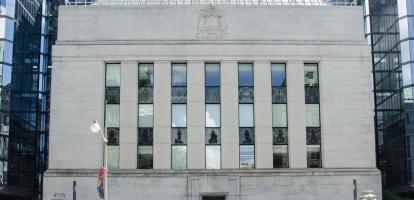One of the tragedies of the COVID-19 crisis is its devastation of arts and culture organizations in this country. Even with emergency support by the federal government, the future for many of these groups is uncertain. As the economy slowly opens up, crowd restrictions and social distancing will mean galleries, museums and the performing arts generally (theatre, music, dance), will face tremendous challenges. Many see a dim and uncertain horizon ahead as revenues shrink or disappear.
Financial struggles were a long-standing a fact of life for the arts community well before the pandemic crisis. Notwithstanding pre-pandemic increases in public funding, including the injection of new money for the Canada Council, public financing for arts and culture in this country has been an ongoing challenge.
As a supplement to public funding, the Canadian private sector – corporations, foundations and committed individuals – has stepped forward to a remarkable degree in the last decade or so. Creative federal-provincial matching programs, such as Artsvest – run jointly by the Department of Canadian Heritage and the Council on Business for the Arts (BftA), which champions private sector engagement – was a welcome step in the right direction.
But the coronavirus crisis has shown that the private sector can’t do it all. As the Financial Times editorialized last week, in the face of the pandemic crisis and well beyond, preserving the arts must now be a priority for governments. Theatres, galleries and museums form a vital part of the social fabric and deserve to be celebrated. The paper noted that European governments, and even the US, have earmarked new arts-supporting funds. But much more needs to be done.
To put things in context, in 2019, Statistics Canada estimated the direct economic impact of cultural products, including live performances, was $53.1-billion (as of 2017, the last data available). The employment estimate was 666,500, or 3.5% of the 18.8 million jobs in the country.
One idea would be to use foreign investment approvals under the Investment Canada Act as an additional source of arts funding. The Act already requires foreign acquisitions in the cultural sector (over a set value) to include support for the arts as a condition of approval. What about extending that requirement to all foreign investments, subject to Investment Canada approvals, regardless of the sector? It could require, as an example, that the foreign investor make contributions to a special cultural industries fund.
This would be consistent with the “net benefit” test for foreign acquisitions as provided in the Investment Canada Act. While that test has been applied in assessing economic benefits of the takeover, the legislation also refers to “the compatibility of the investment with . . . cultural policy objectives enunciated by the government or legislature of any province likely to be significantly affected by the investment.”
The reference to “cultural policy objectives” is broad enough to include commitments to arts funding as a factor in deciding if a foreign investor’s takeover plans merit approval. This would also accord with the Liberal government’s cultural objectives in the party’s 2015 election platform, when Mr. Trudeau talked about cultural industries being a “vibrant part of our economy and our national identity” and the need for “targeted investment” into Canada’ creative industries.
Would these kinds of commitments contravene the WTO Agreement and Canada’s other bilateral trade and investment agreements? Probably not. While the WTO Agreement prohibits investment approvals contingent on the purchase or use of locally-made goods or services, a requirement to contribute money to an arts and culture fund would not be a local purchase requirement.
The Canada-US-Mexico trade agreement (CUSMA), the Canada-EU Trade Agreement (CETA) and the Trans-Pacific Partnership (TPP) Agreement and other bilateral agreements specifically approve Canada’s foreign investment review system. Adding an arts and culture levy, I would argue, is compatible with these agreements.
Canada also has close to 40 bilateral foreign investment protection agreements, essentially geared to safeguarding Canadian investments in developing countries. Requiring inbound investments from these countries to pay into an arts and culture fund would be equally permissible under these treaties.
This is not to suggest onerous funding obligations in the context of the pandemic or beyond. If the levy were to be set at even a modest .01 or 1/100th of the acquisition amount, what we’re talking about would be a blip compared with the total annual value of Investment Canada approvals in all sectors. In 2019, $41.0 billion worth of foreign investments were given the green light, meaning a levy set at that amount would put $40 million into the fund – and that’s just in one year.
This is a minor part of a much larger public policy challenge. However, with the darkening horizon facing arts and culture in Canada, a combination of ideas is needed in order to augment scarce public funding. The virus must not be allowed to kill off cultural institutions that would be impossible to replace.
Published in the Globe and Mail
Lawrence Herman is senior fellow of the C.D. Howe Institute and serves on the board of the Council on Business for the Arts in Toronto.





